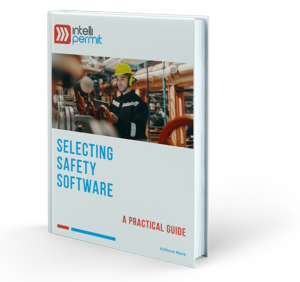Permit to Work – the basics
As safety professionals, we are always asking whether or not there is something more we should be doing to improve safety on our plant. Despite our best efforts, from time to time incidents still happen. Even with the most diligent commitment to safety, year after year the best mining and manufacturing companies still report injuries and fatalities in their annual reports. How does the “Permit to Work” help with this challenge?
Even a single accident should cause us to reflect on some basic questions:
- Have we done everything reasonably practicable to be preventing incidents in the plant?
- Is it realistic to expect a perfect safety record and a totally accident-free environment?
- How can we improve safety when those on our plant come from different organisations (contractors), backgrounds and experience levels?
- How can we be more proactive in preventing incidents, rather than always reacting to something that has occurred?
The reality is that because not everything is totally under your control on the plant, there is always going to be a risk of an accident. Accidents will continue to happen as long as people work in hazardous situations. What is important is that you strive to do everything possible to reduce the risk of harm. This obligation to reduce risk – the duty of care – holds for every role, whether at the highest level (member of the Board) to those in the field doing the actual work in operations, management, maintenance and so on.
There are many steps you can take to improve safety and reduce the risk of accidents in industrial environments. From instilling and promoting a culture of safety on the one hand, to implementing and using safety management systems on the other; the reality is that you will need to approach the safety challenge holistically and bring every weapon in your arsenal to bear.
What is a Permit to Work?
One important industry system that you need to be familiar with is the “permit to work”.
A permit to work is a formal document that is part of a structured process designed to improve the safety of people working on hazardous jobs. The permit is essentially a means of formal communication between the various participants. It ensures that all the risks are understood and mitigated, that adequate controls are in place and that proper communication has taken place (and continues to take place) between individuals involved.
Permit to work systems have evolved over the years through hard earned experience and a process of continuous improvement. Permits are found in multiple industries including chemicals, petroleum and mining. In practice, each company will implement their own variant of a permit, but the safety related fundamentals will usually be the same.
The HSE Guide to Permit to Work Systems
The Health and Safety Executive in the UK has published the HGS250 which is titled “Guidance on permit-to-work systems”. This is a very useful resource that is available as an online PDF for download at http://www.hse.gov.uk/pUbns/priced/hsg250.pdf
The e-book describes best practice relating to the use of permit-to-work systems and will help operators using these systems to ensure that risks have been reduced to a level as low as reasonably practicable.
Computer Aided Permit to Work Systems
In the 90’s computer based tools evolved to support the manual permit process. The use of computers introduced a new dimension in operations safety by introducing more stringent controls, enhancing the visibility of work taking place, enhancing the integrity of the system and more. In the near future, artificial intelligence (AI) will start to play a major role in safety systems as well.
Despite the proven value and the disruptive potential of computer aided safety systems, these systems have on the whole remained true to the basics, and have continued to evolve in line with the principles outlined in HGS250. By combining good safety fundamentals with the best computer based technologies, the benchmark for doing “everything reasonably practicable” to reduce risk has continued to increase over the past decade or so. It is time to pay attention if you have not already implemented a computer based permit system.
The ultimate benefit to all of us in an industry as these systems continue to evolve will be that these unfortunate annual reports with details of incidents and fatalities in an industry will become the exception and not the norm.
Partnering with an innovative company that specialises in computer based permit systems is increasingly important to take advantage of the future innovations in this area. For more information on a computer based permit to work systems please refer to www.intellipermit.com where you can find additional resources. You can also subscribe to receive articles like this one.
Article by Gavin Halse
Free Guide - Selecting Safety Software

Learn why safety management software is necessary to support a modern industrial operation, the different types of software applications, and helpful, practical advice on how to undertake a safety software selection process in your own company.
Get started today, download your guide and take the next step towards world-class safety management.
Permit to work systems are a vital part of effective management of the hazards found in petroleum, chemicals and other industries.
Heath and Safety Executive, United Kingdom

Continue Reading
Q&A with IntelliPERMIT Consultant Lungelo Majozi
Explore the advantages of electronic permit to work (e-PTW) systems over paper methods, from faster investigations to specific hazard management. Learn how e-PTW enhances safety, prevents redundant isolations, and ensures accountability. Discover future trends like 3D modeling. IntelliPERMIT automates tasks, improves communication, and reduces costs, making workplaces safer and more efficient.
Powering Safety Innovations: An Exclusive Q&A with IntelliPERMIT Consultant Shirley Breytenbach
IntelliPERMIT transforms permit management with streamlined processes, competency-based approvals, and real-time visibility. Ensure regulatory compliance, enhance worker safety, and boost operational efficiency. The system offers seamless integration, empowering organisations to proactively mitigate safety risks.
Safety Software Implementation Success : An Exclusive Q&A with IntelliPERMIT Consultant Henry Boshoff
Unlock safety software success with IntelliPERMIT: Prioritise key features, secure user buy-in through change management, and foster collaboration. Set measurable goals, leverage incident data for proactive decisions, and ensure intuitive search capabilities. Streamline report generation and simplify scheduling and management of training, drills, toolbox talks, and audits. Overcome adoption challenges by addressing pain points and customizing the software. Enhance user adoption with automation and user-friendly interfaces. Evaluate safety software providers based on knowledge, experience, and adherence to standards—IntelliPERMIT excels. Easily integrate with existing systems through standard APIs. Opt for web-based software for accessibility and usability. IntelliPERMIT enhances safety practices and compliance.



